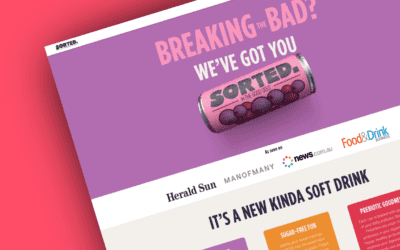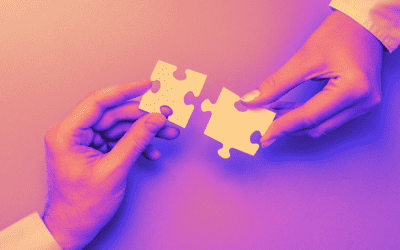Unlock the Power of Email Marketing to Drive Success in E-Commerce
In the highly competitive world of e-commerce, businesses need to employ a variety of strategies to stand out and retain customers. One of the most effective tactics is email marketing, which has proven to be a powerful tool for enhancing customer retention and loyalty. By leveraging the power of email automation, e-commerce stores can create personalised experiences that keep customers engaged and coming back for more.
In this article, we will explore the 10 main email automation flows that every e-commerce store must have in order to maximize revenue, customer loyalty, and customer retention. We will also provide quotes from industry experts to support our points and recommend websites for references and backlinks. Let’s dive in!
1. Welcome Email Series
Objective: Make a Great First Impression
A welcome email series is the perfect way to make a strong first impression and set the tone for your relationship with new subscribers. According to Kevin George, Head of Marketing at Email Uplers, “Welcome emails have on average 4 times the open rate and 5 times the click-through rate of a standard email marketing campaign.”
To maximize the impact of your welcome email series:
- Send the first email immediately after a customer subscribes to your newsletter or makes a purchase.
- Include an introduction to your brand, a thank you message, and a special offer to encourage future purchases.
- Follow up with 2-3 more emails, spaced out over a week or two, offering valuable content, such as blog posts, product recommendations, or tips.
Source: Email Uplers
2. Abandoned Cart Recovery
Objective: Remind and Re-engage Customers Who Left Items Behind
Abandoned cart recovery emails help you reach out to customers who added items to their cart but left your site without completing a purchase. Baymard Institute found that the average cart abandonment rate is 69.8%, which highlights the potential revenue gains from re-engaging these customers.
“Abandoned cart emails are incredibly effective, with conversion rates as high as 15%,” says Chad White, Research Director at Litmus. To optimize your abandoned cart recovery email:
- Send the first email within 1-3 hours of cart abandonment.
- Remind the customer of the items they left behind and offer incentives, like free shipping or a limited-time discount.
- Consider sending follow-up emails if the customer doesn’t complete the purchase after the first reminder.
Source: Baymard Institute, Litmus
3. Post-Purchase Follow-Up
Objective: Strengthen the Relationship and Encourage Repeat Business
The post-purchase follow-up email is crucial for fostering customer loyalty and driving repeat business. “A well-timed, targeted post-purchase email can result in a 20% increase in repeat purchases,” according to Val Geisler, CEO of Fix My Churn.
To create an effective post-purchase follow-up email:
- Send it within a week of the customer receiving their order.
- Thank the customer for their purchase and ask for feedback or a review.
- Offer personalized product recommendations or promote complementary items.
Source: Fix My Churn
4. Replenishment Reminder
Objective: Keep Customers Stocked Up and Coming Back for More
Replenishment reminders are a highly effective email automation flow for e-commerce stores that sell consumable products, such as skincare items, supplements, pet food, or household supplies. These reminders help customers remember when it’s time to reorder a product they’ve previously purchased, ensuring that they don’t run out and encouraging repeat business.
According to Philip Storey, CEO of Enchant Agency, “Replenishment emails can generate 4-10 times higher open rates and revenue per email than standard promotional emails.” Implementing a well-timed and personalized replenishment reminder strategy can significantly contribute to customer retention and overall revenue growth.
To create an effective replenishment reminder email automation flow, follow these best practices:
Determine the Replenishment Cycle
For each product category, estimate the average time it takes for customers to run out of the product. This could be based on the product’s size, usage instructions, or historical customer data. Use this information to establish an appropriate replenishment cycle for each product.
Segment Your Customers
Segment your customers based on their purchase history, specifically focusing on those who have bought consumable products. This will allow you to send targeted replenishment reminders to customers who are most likely to need a refill.
Personalize the Email Content
Ensure that the replenishment reminder email is tailored to the individual customer. Include their name, the specific product they purchased, and the estimated time when they may need a refill. Personalization can help make the email feel more relevant and increase the likelihood of the customer placing a reorder.
Offer Incentives
To further encourage customers to reorder, consider offering an incentive in the replenishment reminder email. This could be a discount code, free shipping, or a complimentary product sample. Incentives can provide an additional motivation for customers to take action and make a purchase.
Monitor and Optimize
Track the performance of your replenishment reminder emails by monitoring open rates, click-through rates, and conversion rates. Use this data to optimize the timing, content, and design of your emails, ensuring they remain effective and relevant for your customers.
Replenishment reminders can not only drive repeat business but also provide a valuable service to their customers. These timely and personalized emails help ensure that customers don’t run out of essential products, enhancing their overall experience with your brand and fostering long-term loyalty.
5. Win-Back Campaigns
Objective: Re-engage Inactive Customers and Reignite Their Interest
Win-back campaigns target customers who haven’t made a purchase or engaged with your brand in a while. “Win-back emails can bring back up to 12% of inactive customers, helping to increase overall revenue,” says Sam Hurley, Founder of OPTIM-EYEZ.
To execute a successful win-back campaign:
- Identify inactive customers and segment them based on their past purchase behaviour.
- Send a personalized email offering a special promotion or incentive to encourage re-engagement.
- Follow up with relevant content, such as new product announcements or sales, to keep their interest piqued.
Source: OPTIM-EYEZ
6. Upsell and Cross-Sell Emails
Objective: Drive Revenue Growth by Promoting Complementary Products
Upselling and cross-selling emails help you increase average order value by suggesting additional or complementary products to customers. According to Neil Patel, Co-founder of NP Digital, “Upselling increases revenue by 10-30% on average.”
To create effective upsell and cross-sell emails:
- Segment customers based on their purchase history and preferences.
- Personalize your product recommendations based on customer behaviour.
- Use clear, persuasive language and visuals to showcase the benefits of the additional products.
Source: NP Digital
7. Birthday and Anniversary Emails
Objective: Celebrate Special Occasions and Strengthen Customer Relationships
Sending personalized birthday and anniversary emails to customers is a great way to celebrate their special days and foster loyalty. “Birthday emails can generate up to 342% higher revenue per email than standard promotional emails,” says Jenna Tiffany, Founder of Let’sTalk Strategy.
To maximize the impact of your birthday and anniversary emails:
- Collect birth dates or signup anniversary dates during the subscription process.
- Offer a special promotion, such as a discount or a gift, to celebrate the occasion.
- Send a personalized message that shows your appreciation for the customer’s loyalty.
Source: Let’sTalk Strategy
8. VIP and Loyalty Program Emails
Objective: Reward Your Most Valuable Customers and Encourage Long-Term Loyalty
VIP and loyalty program emails help you recognize and reward your most valuable customers. “VIP customers can contribute up to 60% of your overall revenue, so it’s essential to keep them engaged,” says Omnisend’s Senior Content Marketing Manager, Greg Zakowicz.
To optimize your VIP and loyalty program emails:
- Segment your customers based on their purchase history and engagement.
- Offer exclusive perks, such as early access to sales, free shipping, or gifts.
- Send regular emails to update customers on their loyalty status and encourage them to continue shopping.
Source: Omnisend
9. Product Review and Testimonial Requests
Objective: Leverage Social Proof to Boost Trust and Drive Sales
Product reviews and testimonials provide valuable social proof that can influence purchase decisions. “Ratings and reviews can increase conversion rates by up to 270%,” says Yotpo’s Co-founder, Tomer Tagrin.
To collect more product reviews and testimonials:
- Send an email to customers within a few weeks of their purchase, asking for their feedback.
- Offer an incentive for leaving a review, such as a discount on their next order.
- Showcase positive reviews on your website and in your marketing materials to boost credibility.
Source: Yotpo
10. Seasonal and Holiday Promotions
Objective: Capitalize on Key Shopping Periods to Drive Sales
Seasonal and holiday promotions allow you to capitalize on key shopping periods and drive sales. “Holiday-themed emails can lead to a 25% increase in open rates and a 20% increase in click-through rates,” says Jordie van Rijn, Email Marketing Consultant at Emailmonday.
To make the most of your seasonal and holiday promotions:
- Plan your campaigns well in advance to ensure timely delivery and relevance.
- Use engaging visuals and language to create a festive atmosphere and showcase your best deals.
- Segment your audience and tailor your offers based on customer preferences and past purchase behaviour.
Source: Emailmonday
Conclusion
Email automation is a powerful tool for e-commerce stores to maximize revenue, customer loyalty, and customer retention. By implementing these 10 essential email automation flows, you can create personalized experiences that keep customers engaged and coming back for more. As you incorporate these strategies into your email marketing, remember to track your results and continually optimize your campaigns for even greater success.
Make sure to leverage the insights and recommendations provided by industry experts, and refer to the websites mentioned in this article for further resources and backlinks. By doing so, you will be well on your way to unlocking the full potential of email marketing for your e-commerce store. Happy emailing!




